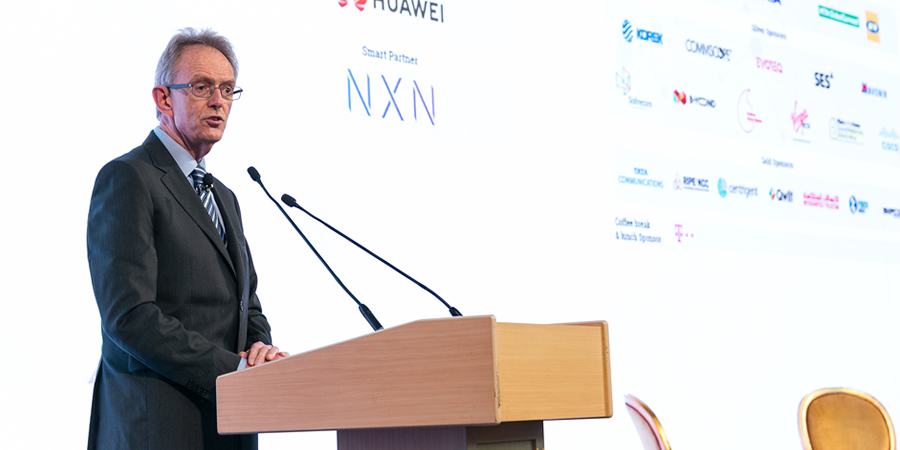Mike ven den Bergh, Chief Global Strategy and Marketing Officer, PCCW Global was one of the keynote speakers at the 13th edition of Telecom Review Leaders’ Summit. During his presentation, he highlighted the journey of PCCW Global and how it transformed from a legacy carrier to a technology company.
PCCW, a Hong-Kong based company, is the international operating arm of HKT and is listed in Hong Kong Stock Exchange. It is one of the top 10 Tier 1 carriers around the world and has an extensive presence in terms of network connectivity. Last year, the company registered revenues of 4.3 billion dollars.
“We are truly global carrier and we are heading towards making the same adjustments as any carrier located in any region. We have to figure out what our customers want and how to transform ourselves to meet their needs,” said Mike.
Mike van den Bergh explained that mobility, IoT, VR and robotics are driving connectivity to the datacenter which required the processing to be closer to quantum creation. Therefore, from an edge compute point of view, everybody should be linked to the datacenter during the shortest possible time while reducing latency in a secure and reliable way.
“We have been able to deliver services when and where our customers want them. We’re looking at a fully-integrated technology status.
“As telecommunications service providers, we were accessing a small number of communities who were our own customers and those who we want to direct our line of sight to. If you have a look now, that automated cloud-centric environment is giving us access to a set of user communities, carriers, SMEs, corporate enterprises, multinationals, mobile companies. This is creating a non-linear growth of opportunities because it presents many sets of relationships.”
One of the key things that PCCW Global has done is actually facilitate the interaction between communities. The company used to be the center of everything. Now, it is effectively facilitating an organic element which is the fact that its customer base is talking to other customers.
“We still have the same business at the core: providing classic connectivity, investing in submarine cables and all physical assets. We’re adding on the digital automated innovation element now to provide focused customer-centric services across the whole ecosystem.”
Following his presentation, Telecom Review managed to secure an exclusive interview with him. He spoke about 5G, and how it is a game changer in terms of what it can do with the creation of mass amounts of data. 5G enables connectivity, but most of the data will be processed in the cloud. This creates a huge opportunity for telco companies.
“If we look at the use cases, ranging from IoT to connected vehicles, these will generate a huge amount of data. The data needs to be processed as close to the point of origination as possible,” he said.
He added: “We need to be able to connect from cloud to cloud, from carrier to cloud and from the point of origination to the cloud. We also need to deal with areas such as security, which is a massive area as the amount of data increases. For us, this is a huge growth opportunity.”
As we all know, the industry is in the process of complete digital transformation. Service providers need to find new and innovative ways to provide for customer needs in order to protect current business and pave the way for new business in the future.
“Our customers are going through a digital transformation, the industry is going through it, and we, as a company, are going through it. It involves looking at every aspect of our business. We are looking at what our customers require from us so that we can adapt and provide for their needs at the digital layer.”
This not only involves implementing a complete digital platform, but also taking a look at the backend processes that are in place to develop the software that underpins all of these services. He stated that PCCW Global is hiring predominantly software programmers rather than network engineers in order to establish these types of changes.
He concluded that “this is a top to bottom digital transformation of our own business aimed at solving the problems of our customers and making sure that we are the best equipped to help them be successful in the future.”










